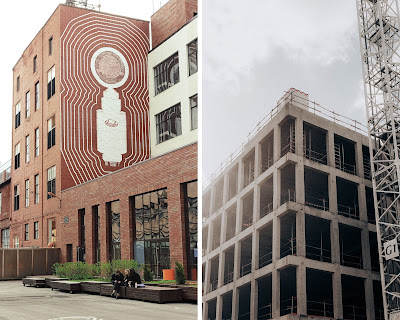Search This Blog
Most Popular
Categories
- Building Construction (83)
- Building Materials (82)
- Columns (2)
- Concrete Beam (3)
- Concrete Construction Techniques (4)
- Concrete Mix Design (9)
- Concrete Repair (14)
- Concrete Slab (10)
- Construction Equipment (16)
- Construction News (7)
- Design of Structures (15)
- Engineering Drawing (1)
- Estimation (3)
- Geotechnical engineering (26)
- Highway Engineering (11)
- Innovations (30)
- Material Testing (9)
- Matrix Analysis of Structures (2)
- Mechanical Engineering (3)
- Strength of Materials (2)
- Structural Analysis (17)
- Structural Design (21)
- Structures (17)
- Transportation Engineering (9)
Difference Between Load Bearing Structures and Framed Structures
The superstructure of a building is that part of the structure that is above the ground level. Based on the load transfer and structural type of the superstructure, they are classified into two: load-bearing structure and framed structure.
 |
| Load Bearing Structures and Framed Structures - Types of Superstructures |
Load-Bearing Structure
A load-bearing structure transfers the loads through the walls, vertically downwards to the foundation. The loads from the roofs, walls of the superstructure are transferred to the walls. Walls take these loads along with their own self-weight downwards.
The walls constructed in a load-bearing structure will have higher strength and thickness. When the thickness increases, the room size decreases.
Load-bearing structures are constructed for buildings with small room sizes. These types can be used to construct buildings up to 2 floors economically.
Read More On Load-Bearing Structure
Framed Structure
Difference Between Load-Bearing Structure and Framed Structure
|
Load-Bearing Structure |
Framed Structure |
|
Loads are safely transferred
to the foundation through the walls. |
Loads are safely
transferred to the foundation through beams, columns, and slabs. |
|
The walls in the load-bearing
structure are made thick to carry loads. |
The walls in a framed
structure do not take loads and hence are constructed with reduced thickness. |
|
As the wall
thickness is high, the floor areas are reduced. |
As the wall thickness
is less, hence more floor area is available. |
|
Suitable for three
stories |
Suitable for any
number of stories |
|
Slow construction
and time consuming |
Speed of
construction is high |
|
After
construction, the position of walls cannot be altered. |
The position of
walls can be changed as necessary. |
|
These are not
earthquake-resistant |
High resistance to
earthquake. |
|
Construction cost
is less |
Construction cost
is high |

0 Comments
Commenting Spam Links Are Against Policies